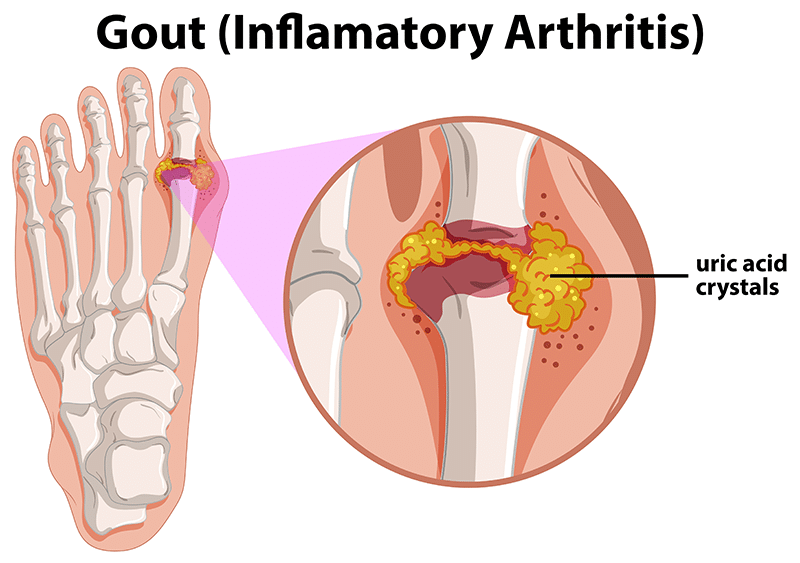Interventional Pain Management for Arthritis


Interventional Pain Management is a medical practice that uses various techniques to alleviate chronic pain caused by conditions such as arthritis. This type of treatment focuses on identifying the source of the pain and then using minimally invasive procedures to provide relief.
Some standard intervention techniques include nerve blocks, joint injections, and radiofrequency ablation.
A pain management specialist typically performs these procedures and can provide long-term pain relief for those suffering from arthritis. Interventional pain management for arthritis can help patients understand the benefits of this type of treatment and make informed decisions about their healthcare.
Get to know the benefits of interventional pain management for arthritis and how it can help you regain control of your life.
There are over 100 types of arthritis and related conditions, which are characterized by joint pain or disease. Arthritis can impact people of any age, race, or gender, and it’s one of the causes of disability in the US. Although women are more susceptible, certain forms of arthritis are more prevalent in older individuals.
Osteoarthritis is the most typical kind of arthritis, affecting more than 30 million adults in the US alone. It occurs when the protective cartilage that covers the ends of the bones wears down over time, causing bones to rub against each other.
This can lead to pain, stiffness, and swelling in the affected joint. Osteoarthritis commonly affects the hands, hips, knees, and spine.
Rheumatoid arthritis is an autoimmune disease where the body’s immune system attacks the joints, causing inflammation and damage to the surrounding tissues. This can lead to pain, stiffness, and swelling in the affected joint. Rheumatoid arthritis can also cause fatigue, fever, and weight loss. It commonly affects the hands, feet, and wrists.
Psoriatic arthritis is a type of arthritis that affects people with psoriasis – a skin condition that causes red, scaly patches on the skin. It can cause joint pain, stiffness, swelling, and skin and nail changes. Psoriatic arthritis can affect any joint in the body, but it commonly affects the fingers, toes, and spine.

Gout is a type of arthritis that occurs when uric acid crystals build up in the joints, causing inflammation and pain. It commonly affects the big toe but can also affect other joints, such as the ankle, knee, and wrist. Gout attacks can be sudden and severe, and certain foods or drinks, such as red meat, alcohol, and sugary drinks can trigger them.
Ankylosing spondylitis, a type of arthritis known for its impact on the spine, brings about inflammation and discomfort primarily in the lower back and hips. However, it doesn’t stop there; this condition can also extend its reach to other joints like the shoulders, knees, and ankles, causing additional challenges.
Ankylosing spondylitis shows a peculiar inclination towards affecting men more often than women, and its onset generally occurs during early adulthood.
Lifestyle changes can help reduce arthritis pain and improve joint function. Two essential lifestyle changes that can help manage arthritis pain are diet and exercise.
A diet rich in fruits, vegetables, whole grains, and lean protein can help reduce inflammation and improve joint health. Regular exercise can also help reduce arthritis pain by strengthening the muscles around the affected joints and improving joint flexibility.
Weight management is also crucial for people with arthritis, as excess weight strains the joints.
Physical therapy is a non-invasive technique that can help manage arthritis pain. A physical therapist can develop an exercise program tailored to an individual’s needs and abilities.
Range of motion exercises can help improve joint flexibility while strengthening exercises can help improve joint stability. Physical therapy can also help improve posture and balance, reducing the risk of falls and injuries.
Strengthening exercises can help improve joint stability. Physical therapy can also help improve posture and balance, reducing the risk of falls and injuries.
Acupuncture is an ancient Chinese medicine technique that involves inserting thin needles into specific points on the body.
It has been shown to be effective in reducing arthritis pain and improving joint function. Acupuncture stimulates the body’s natural healing processes, reduces inflammation, and promotes blood flow to the affected areas.
Massage therapy is another non-invasive technique that can help manage arthritis pain. It involves manipulating the body’s soft tissues, including muscles, tendons, and ligaments.
Massage therapy can help reduce muscle tension, improve joint flexibility, and increase blood flow to the affected areas. It can also help reduce stress and anxiety, worsening arthritis symptoms.

NSAIDs are a analgesic that reduce inflammation and relieve pain. They work by inhibiting the production of prostaglandins, which are chemicals that cause inflammation and pain. Examples of NSAIDs include aspirin, ibuprofen, and naproxen.
Acetaminophen is a commonly used analgesic that is available over the counter. It works by blocking the production of prostaglandins, but it does not have anti-inflammatory properties like NSAIDs. Acetaminophen is often used to treat mild to moderate pain, such as headaches, toothaches, and menstrual cramps.
Opioids are a analgesic that is used to treat severe pain. They work by binding to opioid receptors in the brain and spinal cord, which reduces the perception of pain. Examples of opioids include oxycodone, hydrocodone, and morphine.
Methotrexate is one of the most commonly prescribed DMARDs for RA. It works by inhibiting the production of folic acid, which is necessary for the growth of inflammatory cells.
Methotrexate can be taken orally or by injection, and it usually takes several weeks to start working. The dosage of Methotrexate varies depending on the patient’s weight and the severity of the disease. Some side effects of Methotrexate include nausea, fatigue, and hair loss.
Sulfasalazine is another DMARD that is commonly used to treat RA. It reduces inflammation in the joints and other affected areas of the body. Sulfasalazine is taken orally and can take several weeks to start working. The dosage of Sulfasalazine varies depending on the patient’s weight and disease severity. Some side effects of Sulfasalazine include nausea, diarrhea, and skin rash.
Hydroxychloroquine is a DMARD commonly used to treat RA and other autoimmune diseases. It works by reducing inflammation in the joints and other affected areas of the body. Hydroxychloroquine is taken orally and can take several weeks to start working. The dosage of Hydroxychloroquine varies depending on the patient’s weight and the severity of their disease. Some side effects of Hydroxychloroquine include nausea, diarrhea, and skin rash.
TNF inhibitors are a type of BRM that target the protein known as TNF-alpha. This protein is produced by immune cells and plays a crucial role in inflammation. By blocking TNF-alpha, TNF inhibitors reduce inflammation in the body and alleviate the symptoms of autoimmune diseases such as rheumatoid arthritis, psoriasis, and Crohn’s disease. Some common TNF inhibitors include infliximab, adalimumab, and etanercept.
Interleukin inhibitors are another type of BRM that target specific interleukins, proteins produced by immune cells that also contribute to inflammation. There are several types of interleukins, and different drugs target different types.
For example, anakinra targets interleukin-1, tocilizumab targets interleukin-6, and ustekinumab targets interleukin-12 and interleukin-23. IL inhibitors have been shown to be effective in treating conditions such as rheumatoid arthritis, psoriatic arthritis, and inflammatory bowel disease.

Corticosteroids are a type of steroid hormone naturally produced by the body’s adrenal gland. They have potent anti-inflammatory properties and are commonly used in interventional pain management for arthritis.
Corticosteroids can be injected directly into the affected joint, where they reduce inflammation and swelling, alleviating pain.
Hyaluronic acid is a naturally occurring substance in the body that is found in the joints and other connective tissues. It acts as a lubricant and shock absorber, helping to cushion the joints and reduce friction. In people with arthritis, the production of hyaluronic acid is reduced, which can lead to increased joint pain and stiffness.
Facet joint blocks are a type of nerve block commonly used to treat arthritis in the spine. The facet joints are small joints located between the vertebrae of the spine, and they can become inflamed and painful in people with arthritis.
During a facet joint block, a local anesthetic is injected into the affected joint to numb the area and reduce pain and inflammation.
Epidural steroid injections are another type of nerve block that is commonly used to treat arthritis in the spine.
During this procedure, a combination of a local anesthetic and a steroid medication is injected into the epidural space, which is the area surrounding the spinal cord. The steroid medication helps to reduce inflammation in the affected area, while the local anesthetic provides immediate pain relief.
Radio-frequency ablation (RFA) is a minimally invasive procedure that uses heat to destroy nerve fibers that transmit pain signals. This technique is often used to treat arthritis pain in the neck, back, and joints.
Spinal cord stimulation (SCS) is another interventional pain management technique commonly used to treat arthritis pain. SCS involves using a small device implanted under the skin, which sends electrical signals to the spinal cord to block pain signals from reaching the brain.
Hip replacement surgery is a procedure that involves removing the damaged hip joint and replacing it with an artificial joint made of metal or plastic. This procedure is typically done when the hip joint is severely damaged due to arthritis.
The goal of hip replacement surgery is to relieve pain, improve mobility, and restore the function of the hip joint. The procedure is typically performed under general anesthesia and requires a hospital stay of a few days.
Knee replacement surgery is a procedure that involves removing the damaged knee joint and replacing it with an artificial joint made of metal or plastic. This procedure is typically done when the knee joint is severely damaged due to arthritis.
The purpose of knee replacement surgery is to relieve pain, improve mobility, and restore the function of the joints on the knee. The procedure is typically performed under general anesthesia and requires a hospital stay of a few days.
Knee arthroscopy is a surgical procedure that involves making small incisions in the knee joint to insert a tiny camera and surgical instruments. This procedure commonly diagnoses and treats various knee problems, including arthritis.
During the procedure, the surgeon can remove damaged tissue, repair cartilage, and remove bone spurs that may be causing pain and inflammation in the knee joint.
Shoulder arthroscopy is a minimally invasive surgical procedure used to diagnose and treat various shoulder problems, including arthritis. It involves making small incisions in the shoulder joint to insert a tiny camera and surgical instruments.
This procedure allows the surgeon to examine the shoulder joint and repair any damage that may be causing pain and inflammation. The surgeon can remove damaged tissue, repair tendons and ligaments, and remove bone spurs that may be causing pain and inflammation in the shoulder joint.
Like any medical procedure, interventional pain management carries some risks. These risks include infection, bleeding, nerve damage, and allergic reactions to the medication used during the procedure.
In rare cases, the procedure can worsen the pain, cause paralysis, or even lead to death. It is importatn to discuss these risks with your doctor so you can make an informed decision about whether the benefits outweigh the risks.
Interventional pain management can provide significant relief for people with arthritis. The procedure involves injecting medication directly into the affected joint, which can reduce inflammation and relieve pain. The medication used can vary, but it typically includes a combination of a local anesthetic and a steroid.
If you are considering interventional pain management for your arthritis, choosing the right treatment plan is crucial. How severe your arthritis, your medical history, or any other health problems will play a significant role in determining your treatment plan. We may also recommend other treatments, such as physical therapy or lifestyle changes, to complement the interventional pain management procedure.
Interventional Pain Management is a treatment option for those suffering from arthritis. This approach involves using minimally invasive procedures to manage pain in the affected joints.
Some standard techniques used in interventional pain management for arthritis include joint injections, nerve blocks, and radiofrequency ablation. These procedures can provide significant relief for patients experiencing chronic pain and mobility issues related to arthritis.
Interventional pain management is a crucial approach to treating arthritis that can significantly enhance the daily life of those affected by this condition.
Momentum Medical is an excellent choice for those seeking interventional pain management for arthritis. Our dedicated team of skilled medical professionals with ample experience is committed to delivering the best care possible to our patients.
We use the latest technology and techniques to diagnose and treat arthritis pain, including joint injections, nerve blocks, and radiofrequency ablation. With a focus on personalized care and patient satisfaction, Momentum Medical is the perfect choice for anyone seeking relief from arthritis pain. Contact us today to schedule your consultation and take the first step towards a pain-free life.
Serving Volusia, Flagler, Orange, Osceola, Hillsborough, Pasco, Pinellas, and Seminole county patients with back pain conditions, sports injury, work injury, headaches, lower back pain, auto accident injuries, neck pain and more.
Our staff can accommodate Spanish, French and Russian speaking patients. All other languages with enough notice we can schedule a translator.
Todas nuestras localizaciones tienen hablantes de español en el personal.
© 2024 Momentum Medical